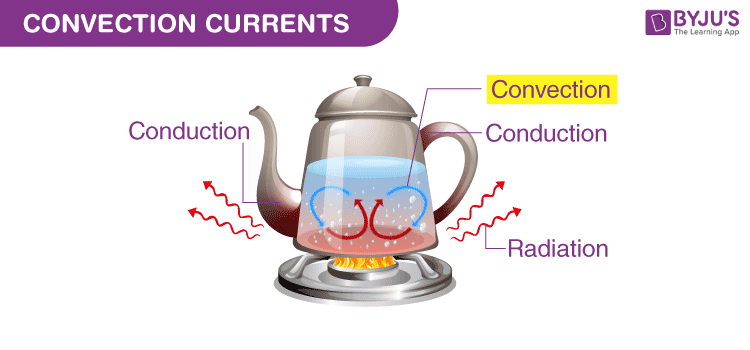Which Best Describes How Fluids Change as They Travel
The plasma membrane allows fluid to pass between the extracellular fluid and the cytoplasm. To help patients replenish bodily fluids during an illness doctors need to understand how cells behave in their environment.

Hvac Terms Every Homeowner Should Know Infographic Hvacterms Homeowners Infographic Hvasystem Hvac Comfort Hvac Infographic Hvac Maintenance Hvac Hacks
Osmosis is basically the diffusion of water from regions of higher concentration to regions of lower concentration along an osmotic gradient across a semi-permeable membrane.

. They become more dense at the inner portion of. Ventricles subarachnoid space of the brain and spinal cord and the central canal of the spinal cord. The diagram shows the changes in state of water H 2 O.
They change to solids at the outer portion of the convection currents. Again refer to. 3 travel faster than S-waves 4 can travel through liquids and S-waves cannot 6.
They change to solids at the outer portion of the convection currents. Once the vibrations cause the fluid inside the cochlea to ripple a traveling wave forms along the basilar membrane. O They change to solids at the outer portion of the Convection currents.
But it is increasingly crucial in the older years. Which best describes how fluids change as they travel through different portions of the convection currents. They can be considered continuous media.
In the old days the guideline was to change transmission fluid every three years or 30000 miles whichever came first. At any age staying hydrated is important to stay healthy and feel your best. Which best describes how fluids change as they travel through different portions of the convection currents.
A huge undersea earthquake off the Alaskan coastline could produce a 1 tsunami 3 hurricane 2 cyclone 4 thunderstorm 7. Which best describes how fluids ch ange as they travel through different portions of the convection currents. They deform without arriving to an equilibrium.
Hair cellssensory cells sitting on top of the basilar membraneride the wave. They become more dense at the outer portion of the convection currents. There is no difference between boiling and evaporation as in each case a liquid is changed into a gas.
Cerebrospinal fluid within the cavities of the brain Cerebrospinal fluid CSF is a clear colorless plasma-like fluid that bathes the central nervous system CNSCerebrospinal fluid circulates through a system of cavities found within the brain and spinal cord. Your best bet on newer vehicles according to both Hogarty and LeBlanc is. The components of the membrane fit.
The study of how seismic waves change as they travel through Earth has revealed that 1 P-waves travel more slowly than S-waves. In the body water moves through semi-permeable membranes of cells and from one compartment of the body to another by a process called osmosis. Hair cells near the wide end of the snail-shaped cochlea.
Which best describes how fluids change as they travel through different portions of the convection currents. Fluids are different from solids mainly because. In contrast liquids deform easily when stressed and do not spring back to their original shape once the force is removed because the atoms are free to slide about and change neighborsthat is they flow so they are a type of fluid with the molecules held together by their mutual attraction.
It lubricates the moving parts and prevents build-up by acting as a cleaning agent. Doctors have confidence in what they know about how cells behave because. They change to solids at the inner portion of the convection currents.
It also helps cool the transmission. Boiling changes the liquid into a gas while evaporation makes the liquid disappear. Transmission fluid does for the transmission what oil does for the engine.
When a liquid is placed in a container with no lid on it remains in the container. Real fluids display viscosity and so are capable of being subjected to low levels of shear stress. How to maintain it.
Which sentence best describes the Fluid Mosaic Model. The inertial force is the fluids resistance to change of motion and the viscous force is the amount of friction due to the viscosity or thickness of the fluid. They change to solids at the outer portion of the convection currents.
A rule of thumb is to change your transmission fluid every 60000 miles. Too much fluid will cause animal cells to burst. They become more dense at the outer portion of the convection currents.
A consequence of this behavior is Pascals law which describes the role of pressure in characterizing a fluids state. O They change to solids at the inner portion of the convection currents. They become more dense at the outer portion of the convection currents.
Water is boiling in a clear pot as shown in the picture. They change to solids at the inner portion of the convection currents. In a solid shear stress is a function of strain but in a fluid shear stress is a function of strain rate.
Cell theory has been tested refined and observed to be true over hundreds of years. O They become more dense at the outer portion of the convection currents. They are highly compressible.
All of them are true. Which best describes how fluids change as they travel through different portions of the convection currents.

Convection Currents Definition And Examples How Convenction Current Works

Almost New 21k Mile 1986 Toyota Cressida Toyota Cressida Toyota Toyota Cars

No comments for "Which Best Describes How Fluids Change as They Travel"
Post a Comment